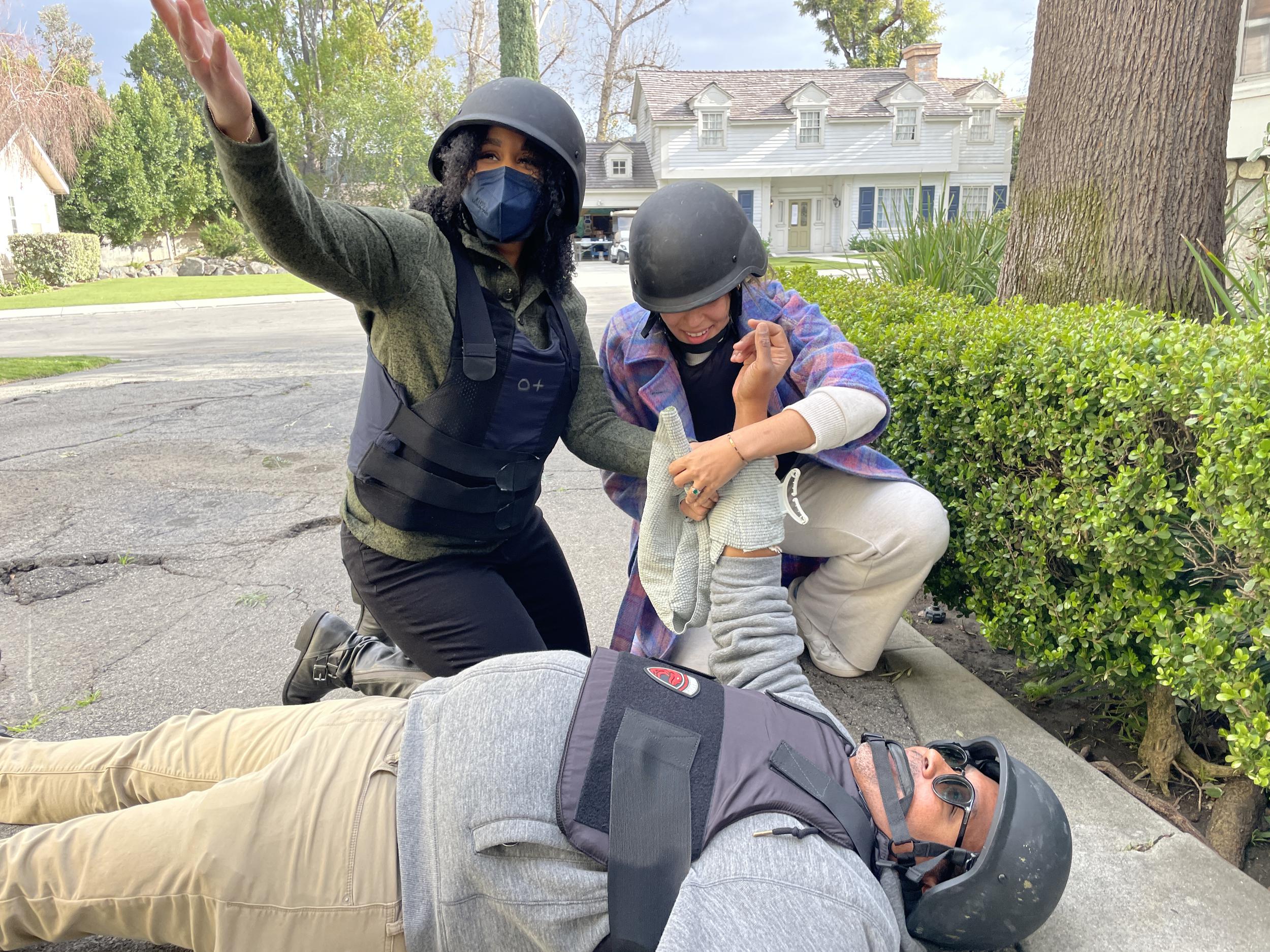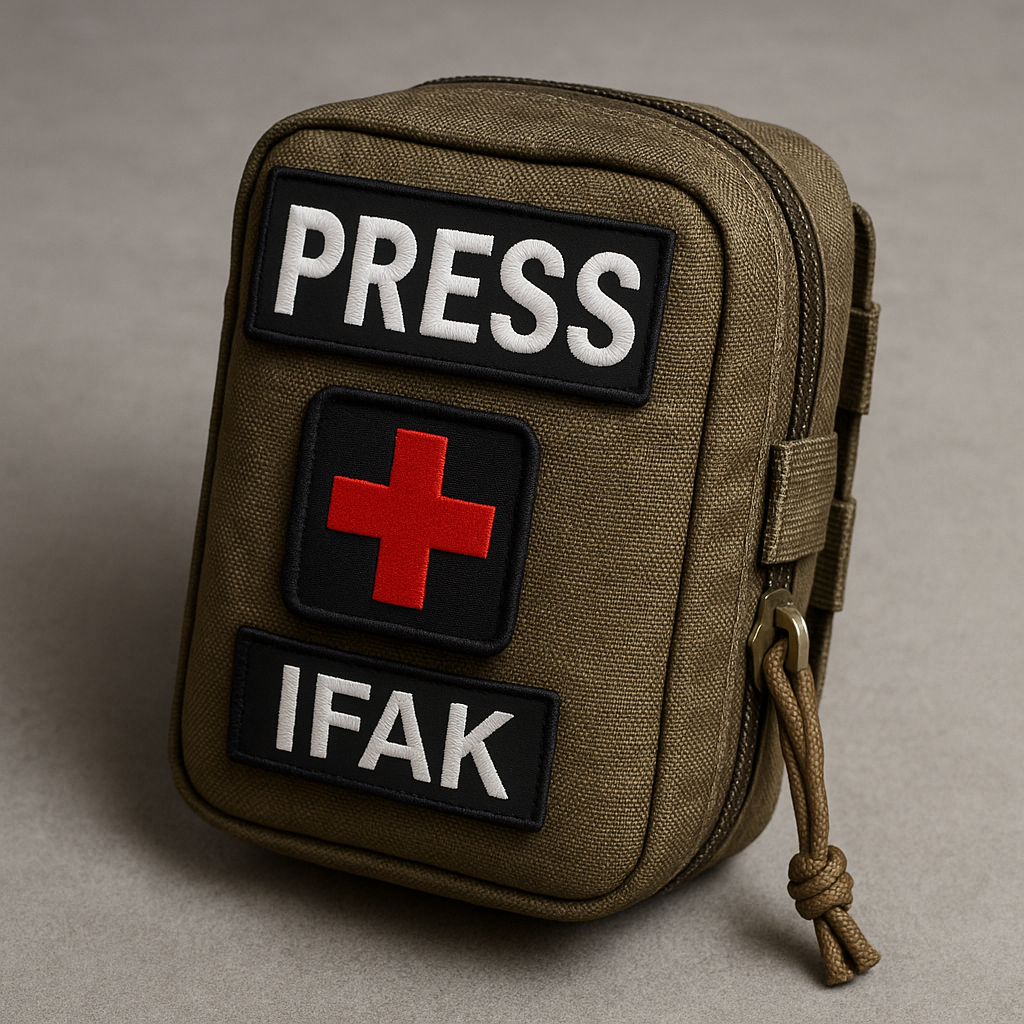
The Journalist Individual First Aid Kit
Journalists working in the field face a unique set of hazards. Whether covering protests, natural disasters, or reporting from remote areas, emergency medical services are often delayed, or not available at all. In those moments, being able to care for yourself or a colleague is critical.
This is why every journalist should carry an Individual First Aid Kit (IFAK) and understand how to use it.
What Belongs in an IFAK
An IFAK is designed to provide immediate care for serious injuries when professional help isn’t immediately accessible. It should include tools to control major bleeding, treat chest injuries, and protect against infection.
A properly equipped IFAK should contain:
- Tourniquet (combat-proven, windlass style)
- Hemostatic gauze (for wound packing and clotting)
- Pressure bandage
- Vented chest seals
- Medical gloves
- Trauma shears
- Marker or pen (to document application times or vital notes)
Additional items such as a nasopharyngeal airway, emergency blanket, or eye shield may be included depending on your training and environment. Kits should be compact, organized, and easy to carry. More importantly, they should only include items the user is trained and confident to apply under stress.

The Team First Aid Kit
In addition to personal kits, crews working together should keep a Team First Aid Kit nearby—often stored in a vehicle, support bag, or carried by a designated team member. This larger kit is meant to back up individual gear and support multiple injuries or prolonged wait times for medical assistance.
A Team Kit might include:
- Multiple tourniquets and trauma dressings
- Extra hemostatic gauze and chest seals
- Splints
- Burn care supplies
- Airway adjuncts
- Irrigation fluids and eye wash
- Emergency blankets
- Extra gloves and wound care materials
- Litter for transport
The team kit is not a substitute for individual preparedness—it’s a shared resource intended for extended coverage or multi-casualty situations.
Placement and Familiarity
Kits should be placed where they can be reached with either hand. They should not be buried in gear, sealed in plastic, or locked in a vehicle during assignments. Everyone on the team should know where each kit is stored and how to access it.
A kit you can’t get to in time isn’t useful.
Training Makes It Real
Carrying a kit doesn’t make you prepared. Understanding how to use it under pressure is what makes the difference.
Crisis Ready Media teaches trauma first aid as part of our five-day Hostile Environment and First Aid Training (HEFAT) course. Journalists in our program learn how to apply tourniquets, pack wounds, treat chest injuries, and manage casualties until help arrives. Our instruction is hands-on, realistic, and informed by experience in the field.
We don’t train journalists to act as medics. We train them to care for themselves and their colleagues when emergency responders aren’t close enough, fast enough, or available at all.
Crisis Ready Media equips journalists with the tools, training, and confidence to handle the real-world risks they face on assignment. Whether you’re on the ground in your hometown or halfway across the world, being able to care for yourself or your team could save a life.
Join Us
Our next five-day HEFAT course takes place this October. It’s open to working journalists, freelancers, and students preparing to enter the field. You’ll train alongside experienced instructors in realistic scenarios designed to prepare you for the hazards of modern reporting.
Your safety is not a luxury. It’s part of the job. We’ll help you be ready.
Disclaimer: The gear mentioned in this post reflects equipment that Crisis Ready Media has identified as meeting the quality standards appropriate for field use. Using the provided link supports our nonprofit mission. However, we strongly encourage every journalist to thoroughly test, configure, and evaluate all equipment—especially first aid tools—to ensure it meets their specific needs, environment, and level of training.

